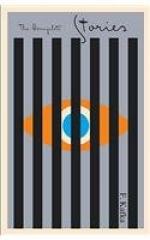|
|
Stories of Franz Kafka A Hunger Artist (also translated as a Fasting Artist)
The story opens with a description of the old-fashioned hunger or fasting artist, who spends his time on public display, behind caged spectacles starving for a cause or for art. He lives his lives there, with ribs protruding, allowing young children to look, poke, and fear his awe, strength, and courage. However, there has been a large decline in these hunger artists in the last decades. The hunger artists used to persist in a little cage, watched almost constantly by "butcher" night watchmen who look over him at all hours to make sure he does not escape to find food or eat any droppings left by spectators. The manager of the hunger artist even watched over him to justify his artistry. Women are amazed at the hunger artist's ability to sing and starve at the same time. When the spectacle is brought to full effect, after forty days of fasting, the artist is brought to a ring in which crowds of people - especially women - pay to watch him. They even bring him food in order to make him say no. Eventually, a young woman leads him out of his cage to a meager meal. However, why would he accept food after such a long fast when he can make it longer? Eventually, the manager spoon feeds the hunger artist with food, after he had reached his forty days, and the crowd would cheer and disperse. The hunger artist then remains the only person left alone. However, as this world declines, so does the respect and admiration for the hunger artist, and he no longer persists in such a miraculous spectacle.
Years later, the hunger artist is placed in a circus, with the animals and far from the grand spectacle of decades earlier. Children still stop and look at him, but do not understand the pain and diligence of the art of the hunger artist. The manager does not take care of him as he used to, nor do the people. At the circus, parents of children recall their fond memories of witnessing such amazing feats of the hunger artist, and soon move on to other spectacles in the circus.
The previous days of glory did fulfill the artist; he had little rest between his fasts and looked forward to the excitement of the exhaustion and weakness. But, now, that time is over.
"Just try to explain to someone what the art of fasting is. No one who does not feel it can be made to grasp what it means. The beautiful placards became dirty and illegible, they were ripped down, no one thought of replacing them; the little board showing the tally of days fasted, which at first had been scrupulously changed each day, had now long stayed unaltered, for after the first few weeks the staff had grown weary of even this little task; and so the hunger artist did indeed go fasting on, as he had once dreamed of doing, but no one counted the days, no one, not even the hunger artist himself, knew how great his achievement was, and his hearty grew heavy. And once in a while some casual passer-by should stop, ridicule the outdated number of the board and talk about fraudulence, that in its way the stupidest lie that ever indifference and inborn malice could invent, for it was not the hunger artist who was cheating, he was working honestly, but the world was cheating him out of his reward." A Hunger Artist, pp. 199-200
Years later even, the people stop looking at the hunger artist and cease to admire his work. His cage looks empty and the circus overseer wonders what became of it. Upon closer look, he sees the week hunger artist below the leaves in the cage, barely alive. The overseer tells him he no longer has to fast. However, the hunger artist claims that he must fast; he has no other choice. He would eat happily like the rest of the people if he could only find nourishment that satisfies him. Nothing has ever satisfied him, so he starved out of necessity. Upon proclaiming these words, he dies. The circus buries him and places a young panther in his cage.




